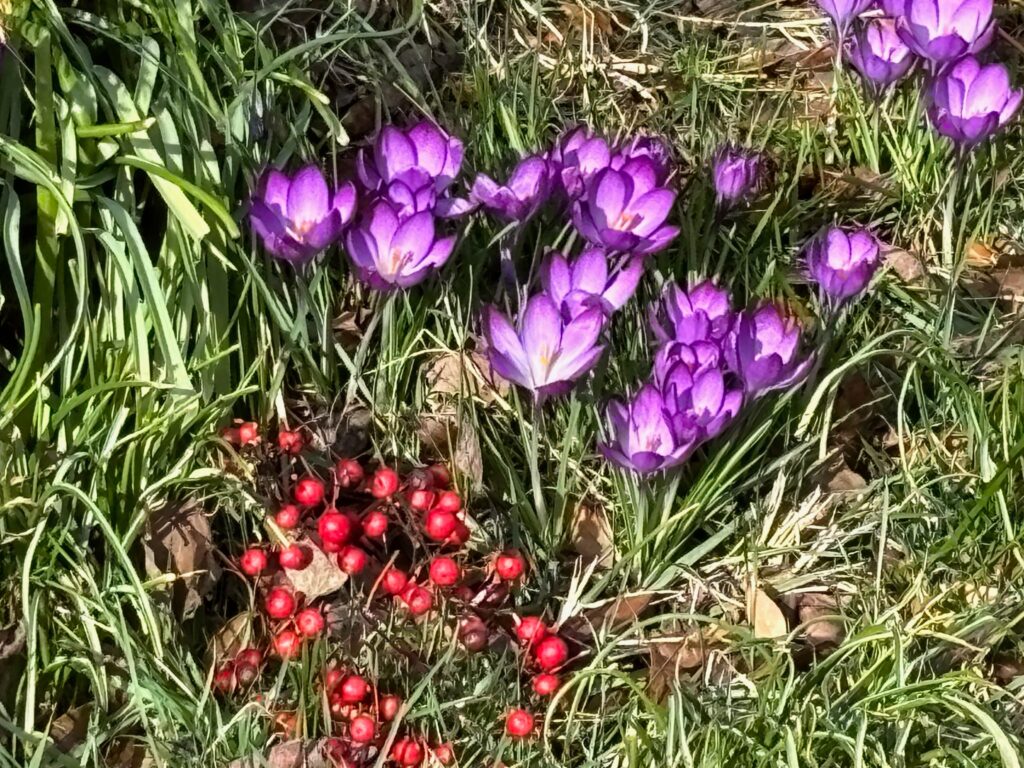
Digging a tiny hole to transplant my peppers, I smiled as the soil crumbled in my hands. It was dark, moist soil, the result of years of adding organic matter (straw, compost, and leaves) to the heavy clay in our yard. While I care for my plants by watering and weeding them, the soil is probably the most important part of my garden’s success. There’s nothing you can do to force a plant to grow, but there are lots of ways we can create an environment that nurtures them. The same goes for people and situations as well.
This has been a hard-won truth for me. At my core, I am, to quote Clara Oswald from Doctor Who speaking about herself, “a bossy control freak.” If it was up to my worst impulses, I would be in control of everything, forcing people to do things the “best” way (aka my way). As my friend Jen Blue says, that is a supervillain fantasy. Forcing everyone to do the same thing is also the fundamental foundation of fascism. Thankfully, I fight hard against those worse impulses.
As I know from the garden, trying to force things into the narrow little boxes we imagine is not only impossible, but counterproductive. Trying to force a plant to grow will exhaust you and not affect on the plant. There’s a wonderful Frog and Toad story where Frog tries to grow a garden. He sings to his plants, reads poetry to them, and encourages them until he’s blue in the face. At the end, he’s falling over exhausted. The flowers grow, but they would have grown perfectly well without all of that effort.
In contrast, when you create the right environment and try not to force the results, sometimes things will happen that you never expect.
In my garden every year, I end up with a ton of volunteer tomato plants that have replanted themselves from the year before. By building the soil, I get it ready for the seeds without my intervention. Some years, those have saved me from my garden not producing anything at all.
The process of rewinding in ecology goes one step further. Instead of a focus on conserving or reintroducing individual species, rewilding is about trying to create the right environment for complex, interconnected networks of organisms to reemerge. It’s about putting faith in the living and non-living elements of a system rather than micromanaging every bit of it. It’s about building resilience and allowing relationships to come about organically instead of trying to bring back some mythical past.
That’s how it is with our kids too. While some of us may mourn a nostalgic past, rewilding childhood and parenting is more about finding ways to empower children and give them the environments they need to thrive today.
Giving them opportunities to problem solve is a huge way to build that environment. When my kids were having trouble getting ready in time to watch TV before bedtime, my older son suggested turning on the TV at a specific time whether they were ready or not. If you missed the beginning of the show, you missed it. Despite growing up with a set TV schedule, I hadn’t even thought of that very simple solution!
Another way to create those environments for learning is to provide explanations around why certain systems and rules came about. Being told “that’s just the way it is” has always rubbed my kids wrong. Understanding the context helps them not just follow the letter of the law but the moral spirit of it – that is, if it’s a good rule. Instead of trying to force my kids’ into “being good” with harsh punishments, I try my best to model moral behavior and discuss what kindness in action looks like.
I’ve found that sometimes even solutions will emerge on their own if you give them time and space. My older son and my mom had a disagreement a few months ago. I wanted so badly to fix it and make them both happy. But you can’t force someone into a sincere apology. Instead, when my parents visited for a relaxed, chill afternoon spent together, my mom and kid reconnected without me interfering at all. That environment allowed them to figure it out together.
Both nature and people are beautiful, complex, often unpredictable systems. When we try to shove them in our predetermined boxes, we eliminate all of that complexity and reduce them down to dull over-simplicity. It’s so much better to give them the space, support and freedom to grow and bloom as they are, not how we want them to be.
If you’d like to support organizations seeking to build physical and metaphorical soil, a couple of wonderful community agriculture groups are Soul Fire Farm, Backyard Basecamp, and We Sow We Grow.